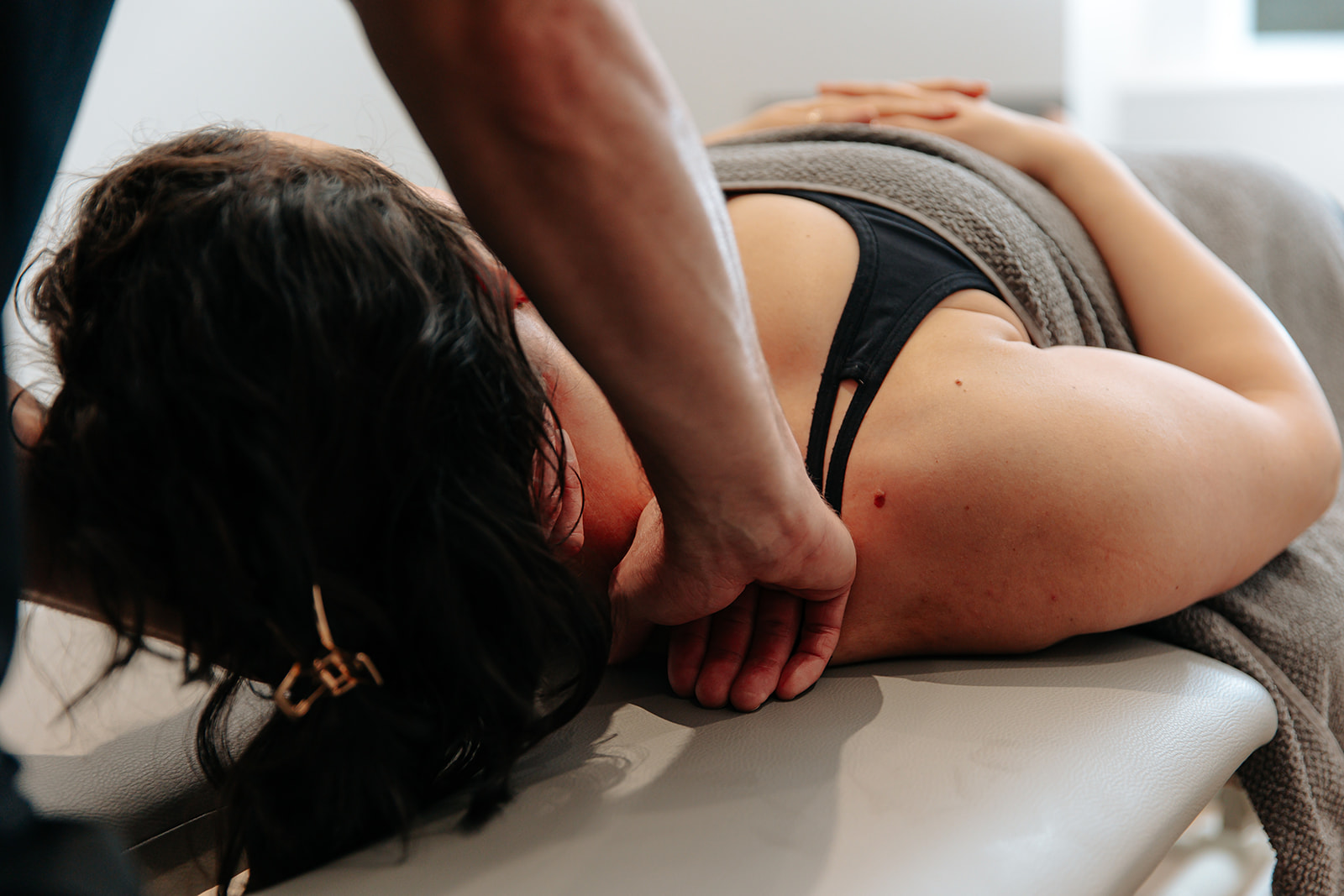Hatt Clinic
July 12, 2024
October 27, 2024

Suffering from a shoulder injury or chronic shoulder pain can cause considerable disruption to your movement and impact your daily life. Even simple tasks, such as reaching for an object or lifting can become a challenge.
As with any type of injury, rehabilitation is one of the most integral parts of the recovery process. In this guide, we’ll look at some causes of shoulder pain and treatments available.
If you have been experiencing persistent pain, we can provide treatment options for shoulder pain to improve your mobility and recovery.
It’s common to feel some soreness in your shoulder muscles, especially after a workout or if you’ve been carrying or lifting heavy objects. However, chronic pain could indicate a more serious underlying issue.
Some indications of a shoulder injury can include:
Under normal circumstances, your shoulder should have a full range of motion, and any restrictions or pain can be signs of injury. Often shoulder pain can be a result of injuries such as:
Different conditions will have different treatments and rehab guidelines so it’s best to see a physio so they can accurately diagnose your injury.
Before you recive any kind of treatment It’s essential to avoid certain actions that could aggravate your pain or delay healing. Here are some tips to manage your pain:
Healing times can vary significantly on the type of shoulder injury you have as well as the severity of the injury. Soft tissue injuries like rotator cuff tears or shoulder bursitis may heal within a few weeks to a few months with appropriate treatment, including physiotherapy and rest.
More severe injuries, such as a dislocated shoulder or frozen shoulder, can take longer — anywhere from several weeks to many months or even years, depending on the circumstances.
When it comes to rehab for a shoulder injury, there are two important goals:
We offer a range of services to help you achieve these goals, including:
Our trained physical therapists use tailored exercise programs and hands-on treatment focused on reducing pain and improving mobility. Treatment can incorporate strengthening exercises, stretching routines, and manual therapy techniques to prevent further injury.
With our treatment, you’ll always have access to modern and well-equipped facilities along with a range of advanced technology and treatment options. This can include shockwave therapy, movement assessment tools, and acupuncture, all designed to help you recover from your shoulder injury as quickly as possible.
Learn more about our physio & sports therapy treatment
If you’re recovering from a shoulder injury, our personalised rehab programs can help you regain confidence in a supportive environment. After an initial 1:1 appointment, we’ll understand how your injury affects your daily life and tailor a program that fits your specific needs.
Through our rehab classes uou can improve your strength and mobility with the guidance of experienced professionals and get back to doing the things you love!
Learn more about rehabilitation at Hatt’s
We use massage and manual therapy to target and reduce stiffness and tension in your shoulder area. Our therapists can use techniques such as myofascial release and deep tissue massage in order to alleviate pain. These therapies can be particularly beneficial for conditions like frozen shoulder and osteoarthritis, where muscle tightness and joint stiffness are recurrent issues.
Learn more about our massage and manual therapy treatment
Start improving your health and movement today with our dedicated treatment services. Early morning and evening appointments are available across our clinics in Devizes, Marlborough and Frome to work around your schedule. Book your appointment online today!
If you would like to learn more about our services and prices, please get in touch at enquiries@hattclinic.co.uk, or please call our patient services team on 01380 730473.